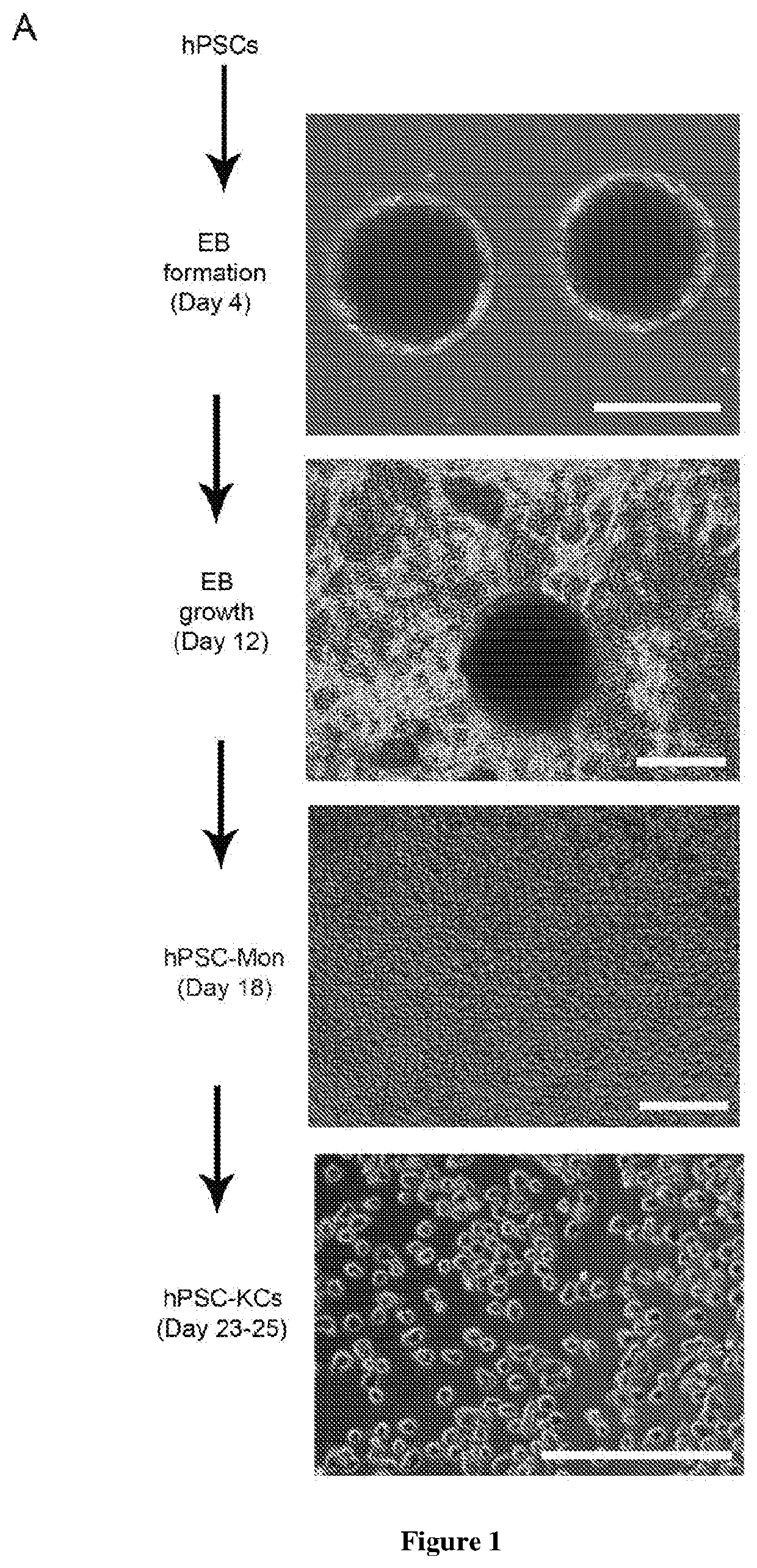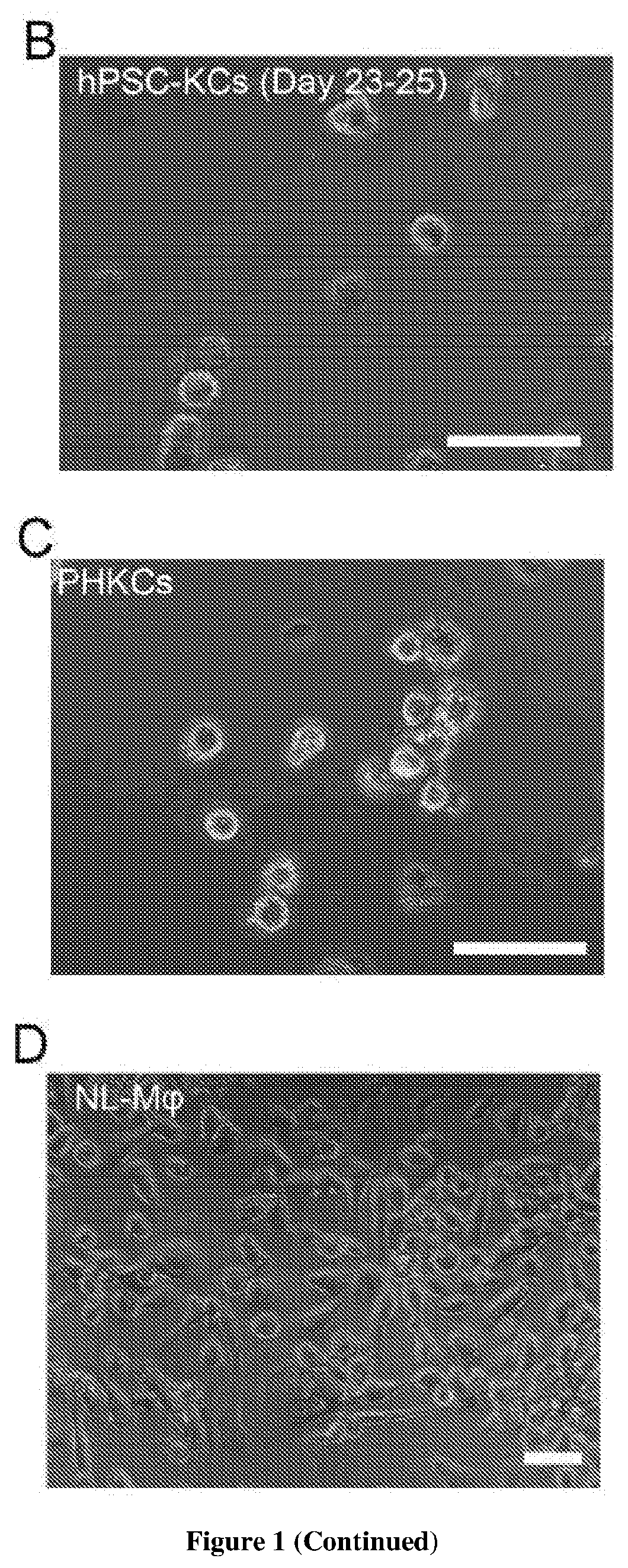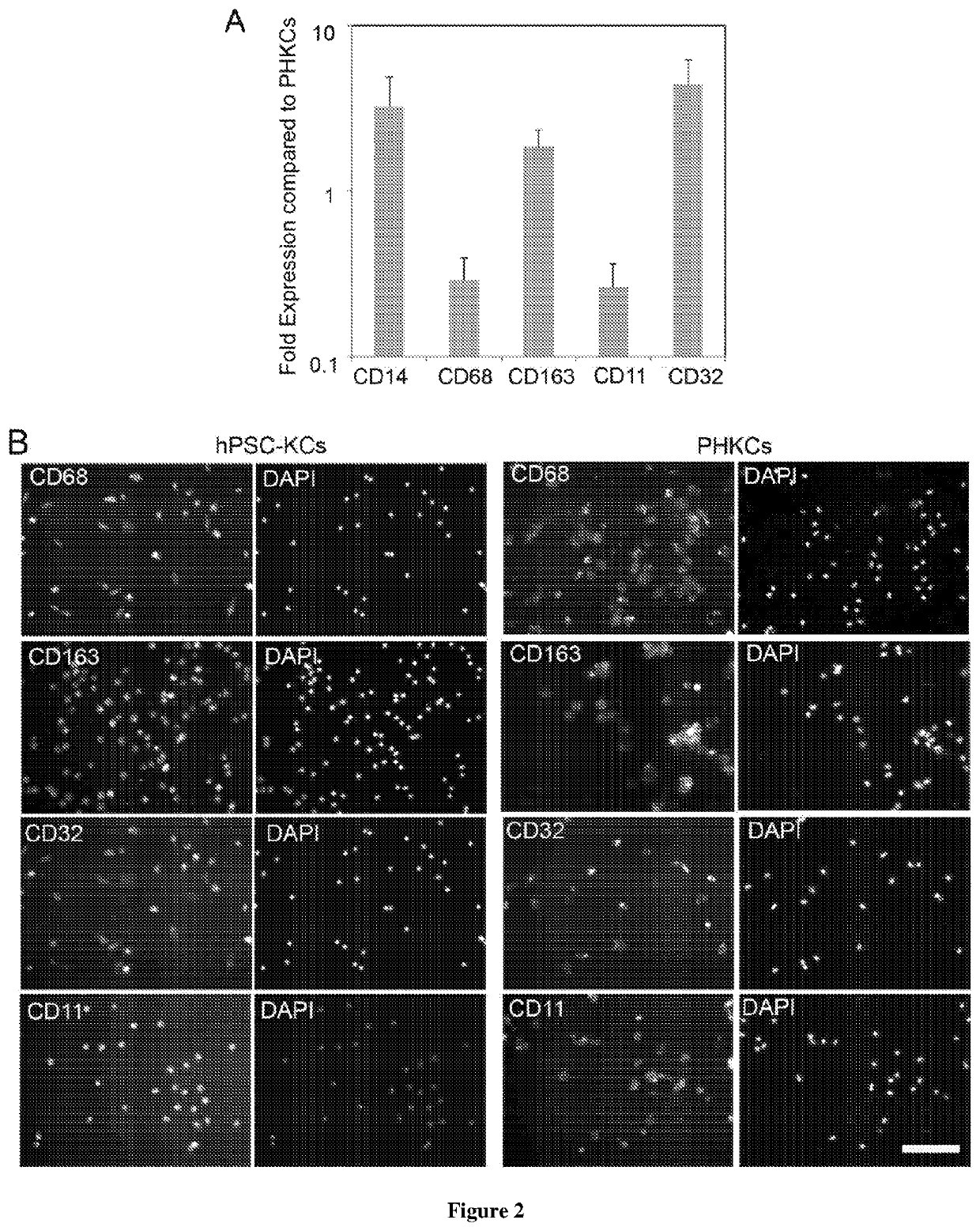Methods of generating hepatic macrophages and uses thereof
a technology of hepatic macrophages and hepatic cells, applied in the field of cell biology and biochemistry, can solve the problems of limited human kupffer cells, inability to maintain primary human kupffer cells (phkcs) over extended time periods, and inability to expand in culture to obtain larger cell numbers
- Summary
- Abstract
- Description
- Claims
- Application Information
AI Technical Summary
Benefits of technology
Problems solved by technology
Method used
Image
Examples
example 1
ion of Culture Conditions for Differentiation of hPSC-KCs
[0086]hPSC-derived monocytes (hPSC-Mon) were differentiated from iPSC-IMR90 according to methods described in Wilgenburg et al. The initial results showed that embryoid bodies (EBs) could be formed and maintained in culture under serum free and feeder free conditions (FIG. 1A). EBs adhered within 2 weeks and monocytes could be generated at approximately 18 days of culture. These monocytes could be harvested weekly from the supernatant of the differentiation cultures.
[0087]hPSC-Mon were collected from supernatant and differentiated into hepatic macrophages (hPSC-KCs) (FIG. 1A). hPSC-Mac was used as a control to analyze similarities and differences between non-liver macrophages (NL-Mφ) and hepatic macrophages (KCs). The results showed that hPSC-Mon could be differentiated into adherent hPSC-KCs (FIG. 1A).
[0088]In order to differentiate hPSC-Mon to hPSC-KCs, hPSC-Mon were treated with culture medium comprising PHHCM combined with...
example 2
pression of hPSC-KCs
[0090]Following generation of hPSC-KCs, marker expression of the cells was analyzed by gene expression and immunostaining. F4 / 80 has been documented as a representative marker for mouse Kupffer cells but not for human cells. Recently, CD14 in combination with a classification of CD32, CD68 and CD11 subpopulations of Kupffer cells has been used to define Kupffer cells in humans. In addition, CD163 has been used as a marker for activated macrophages. Hence, the expression of these markers in hPSC-Mac and hPSC-KC was examined by gene expression studies. The results showed that hPSC-KC expressed CD14, CD163 and CD32 at levels comparable to PHKCs (FIG. 2A). CD68 and CD11 expression in hPSC-KCs was approximately 30% of PHKCs. The marker expression was confirmed by immunostaining (FIG. 2B).
example 3
Production by hPSC-KCs Upon Activation is Similar to PHKCs but Different to NL-Mφ
[0091]For activation of hPSC-KCs to examine cytokine production, lipopolysaccharide (LPS) was added to the culture medium during the last 16 hours of culture. Medium was collected at the end of the incubation period and morphological changes and cytokine production upon LPS activation was analyzed. The results showed that LPS activation induced typical morphological changes from round to flat and spread cells (FIG. 3A) in both NL-Mφ and hPSC-KCs. Importantly, the fold induction in hPSC-KCs was in the same range as that of the PHKCs (25 fold) (FIG. 3B). IL-6 production in primary human hepatocytes (PHHs) was below detectable levels. The fold increase in TNF4α production in hPSC-KCs (33 fold) was similar to the fold increase in PHKCs (35 fold) (FIG. 3C). TNF4α production in PHHs upon LPS activation was below detectable levels. NL-Mφ produced much higher levels of cytokines compared to PHKCs and hPSC-KCs, ...
PUM
 Login to View More
Login to View More Abstract
Description
Claims
Application Information
 Login to View More
Login to View More - R&D
- Intellectual Property
- Life Sciences
- Materials
- Tech Scout
- Unparalleled Data Quality
- Higher Quality Content
- 60% Fewer Hallucinations
Browse by: Latest US Patents, China's latest patents, Technical Efficacy Thesaurus, Application Domain, Technology Topic, Popular Technical Reports.
© 2025 PatSnap. All rights reserved.Legal|Privacy policy|Modern Slavery Act Transparency Statement|Sitemap|About US| Contact US: help@patsnap.com



